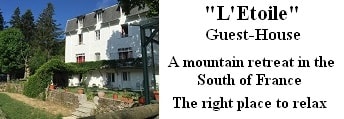
|
Jasper National Park |

 Established in 1907, Jasper National Park stands as a testament to the diverse beauty of the Canadian Rockies. Located roughly 370 km west of Edmonton, Alberta, it is the fifth national park of Canada and part of the esteemed group of seven Canadian Rocky Mountain parks recognized as UNESCO World Heritage sites. This illustrious group includes Yoho, Banff, Kootenay national parks, and the Robson, Assiniboine, and Hamber mountain provincial parks. The park is renowned for its stunning vistas of towering peaks, cascading waterfalls, deep canyons, and expansive glaciers, notably those within the Columbia Icefield.
Established in 1907, Jasper National Park stands as a testament to the diverse beauty of the Canadian Rockies. Located roughly 370 km west of Edmonton, Alberta, it is the fifth national park of Canada and part of the esteemed group of seven Canadian Rocky Mountain parks recognized as UNESCO World Heritage sites. This illustrious group includes Yoho, Banff, Kootenay national parks, and the Robson, Assiniboine, and Hamber mountain provincial parks. The park is renowned for its stunning vistas of towering peaks, cascading waterfalls, deep canyons, and expansive glaciers, notably those within the Columbia Icefield.
 Spanning an impressive 11,000 km², Jasper National Park is flanked by the Hamber and Mount Robson provincial parks to the west, Banff National Park to the south, and the Willmore Wilderness Park to the north—all nestled within Alberta’s rugged terrain. The quaint town of Jasper, sharing its name with the park, lies at its very core.
Spanning an impressive 11,000 km², Jasper National Park is flanked by the Hamber and Mount Robson provincial parks to the west, Banff National Park to the south, and the Willmore Wilderness Park to the north—all nestled within Alberta’s rugged terrain. The quaint town of Jasper, sharing its name with the park, lies at its very core.
Rewinding a billion years to the Precambrian era, the land that now forms the park’s mountainous skyline was once a vast plain. Over eons, this region was submerged under ocean waters, becoming a repository for riverborne sediments like mud, silt, and sand. These layers accumulated to form deep sedimentary strata.
Fast forward to about 75 million years ago, when tectonic forces thrust these sediments skyward, molding the rocks into the folds and fractures that would become the iconic Rocky Mountains. The relentless forces of erosion—rain, rivers, and glaciers—have since sculpted these formations into their present grandeur.
 The park’s landscape is a mosaic of three distinct ecosystems: mountainous, subalpine, and alpine. The mountainous zone boasts lush forests of Douglas-fir and lodgepole pine, interspersed with stands of cottonwood and white spruce. Ascending to the subalpine forests, one finds Engelmann spruces, lodgepole pines, and subalpine firs clinging to the mountainsides. Above the treeline, the alpine zone bursts with a spectrum of wildflowers, including saxifrage, Rocky Mountain penstemon, and campion.
The park’s landscape is a mosaic of three distinct ecosystems: mountainous, subalpine, and alpine. The mountainous zone boasts lush forests of Douglas-fir and lodgepole pine, interspersed with stands of cottonwood and white spruce. Ascending to the subalpine forests, one finds Engelmann spruces, lodgepole pines, and subalpine firs clinging to the mountainsides. Above the treeline, the alpine zone bursts with a spectrum of wildflowers, including saxifrage, Rocky Mountain penstemon, and campion.
Jasper’s wildlife is as diverse as its flora, with inhabitants such as elk, moose, mule deer, woodland caribou, bighorn sheep, and mountain goats. Predators like coyotes, wolves, cougars, lynxes, black bears, and grizzly bears roam the landscape. The park also serves as a sanctuary for 305 bird species, including the majestic golden eagle and the Canadian chickadee, alongside 16 fish species, like the longnose sucker and the bull trout.
 The park is situated on lands that hold deep historical significance for various First Nations. Archaeological evidence reveals human activity dating back 10,000 years, long before European settlers arrived. The Athabascan nations, including the Sékanis, Dane-zaa, Tsuut’ina, and the Secwepemc, once thrived here, engaging in seasonal hunting. They were later joined by the Crees and the Stoneys-Nakodas, and a Métis community emerged from the intermingling of natives and settlers.
The park is situated on lands that hold deep historical significance for various First Nations. Archaeological evidence reveals human activity dating back 10,000 years, long before European settlers arrived. The Athabascan nations, including the Sékanis, Dane-zaa, Tsuut’ina, and the Secwepemc, once thrived here, engaging in seasonal hunting. They were later joined by the Crees and the Stoneys-Nakodas, and a Métis community emerged from the intermingling of natives and settlers.
Historically, Canadian national park policies have often resulted in the displacement of indigenous peoples. In Jasper, Métis families, deemed squatters, were displaced to create an idyllic tourist haven. New regulations prohibiting hunting and trapping, vital to their survival, led to eviction notices in 1909, compelling them to leave by March 1910.
In 1872, Sandford Fleming surveyed the area for the Canadian Pacific Railway, initially favoring Yellowhead Pass. The route through Kicking Horse Pass was eventually selected instead. Subsequently, the Grand Trunk Pacific Railway and the Canadian Northern Railway opted to construct a northern rail line through Yellowhead Pass. This development led the government to designate a forest reserve in 1907, which was later designated as Jasper National Park in 1930, in honor of Jasper Hawse, a regional pioneer.








